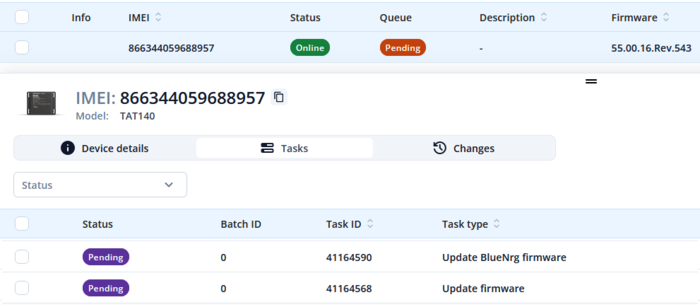TAT1XY Device placement in a vehicle: Difference between revisions
Created page with "==TAT1XY Device placement in a vehicle== The thoughtful placement of an asset tracker in a vehicle is key to ensuring seamless tracking and obtaining accurate location. We ca..." |
No edit summary |
||
| Line 9: | Line 9: | ||
* Glove box<br> | * Glove box<br> | ||
* Behind the front or rear lights<br> | * Behind the front or rear lights<br> | ||
<b>Medium Signal Strength Locations:<br> | <b>Medium Signal Strength Locations:</b><br> | ||
* Under the car <br> | * Under the car <br> | ||
* Central console compartment<br> | * Central console compartment<br> | ||
<b>Low Signal Strength Locations:</b> | <b>Low Signal Strength Locations:</b></b> | ||
* Trunk <br> | * Trunk <br> | ||
* Under the seat <br> | * Under the seat <br> | ||
Revision as of 14:23, 3 January 2024
Main Page > Autonomous Trackers > TAT100 > TAT100 Manual > TAT1XY Device placement in a vehicleTAT1XY Device placement in a vehicle
The thoughtful placement of an asset tracker in a vehicle is key to ensuring seamless tracking and obtaining accurate location. We categorize the mounting places into three groups based on expected GNSS signal strength, helping you make informed decisions when choosing the asset tracker's location in the vehicle.
High Signal Strength Locations:
- Front and rear bumper
- Glove box
- Behind the front or rear lights
Medium Signal Strength Locations:
- Under the car
- Central console compartment
Low Signal Strength Locations:
- Trunk
- Under the seat
- Door compartment
Understanding these specific mounting places in each category will guide you in strategically placing GPS asset trackers, maximizing their battery life, and ensuring reliable periodic location monitoring.
While we've suggested categories and examples for optimal GPS tracker placement, it's essential to note that these are recommendations. Every vehicle is unique, and factors like model, make, and construction materials can impact GPS signal reception differently.
It is always a good idea to position the antenna in such a way that there is a little metal and other obstructions in the way towards the outside of the vehicle. Similar to the example where device is placed behind the rear lights - it is better if antenna is facing the plastic light fitting instead of facing upwards to the metal vehicle frame.
Before installing a larger quantity of devices, we strongly recommend conducting individual tests on your specific vehicles. This will help identify the most suitable placement that aligns with your expectations and ensures optimal GPS signal strength.

